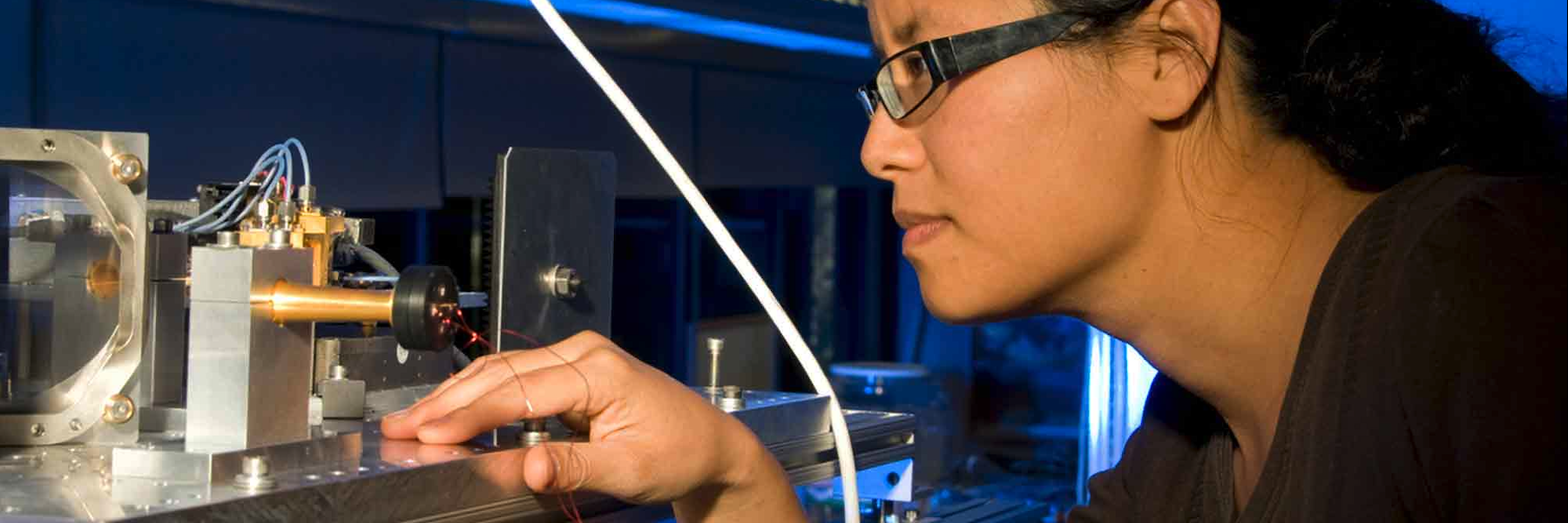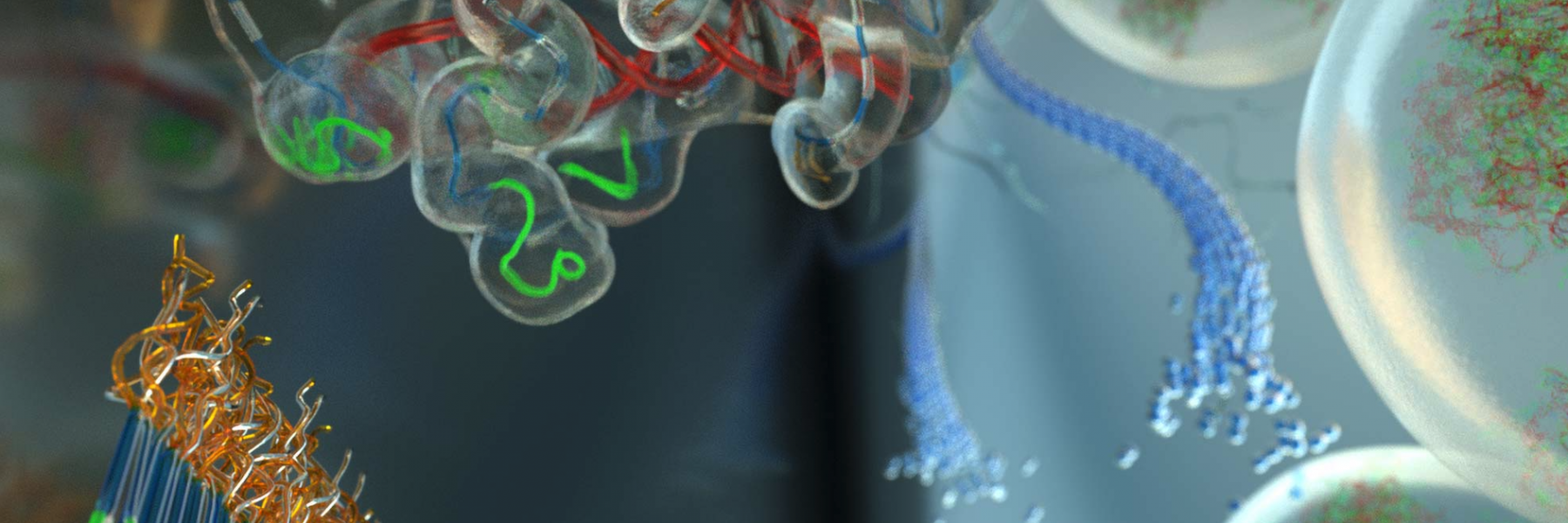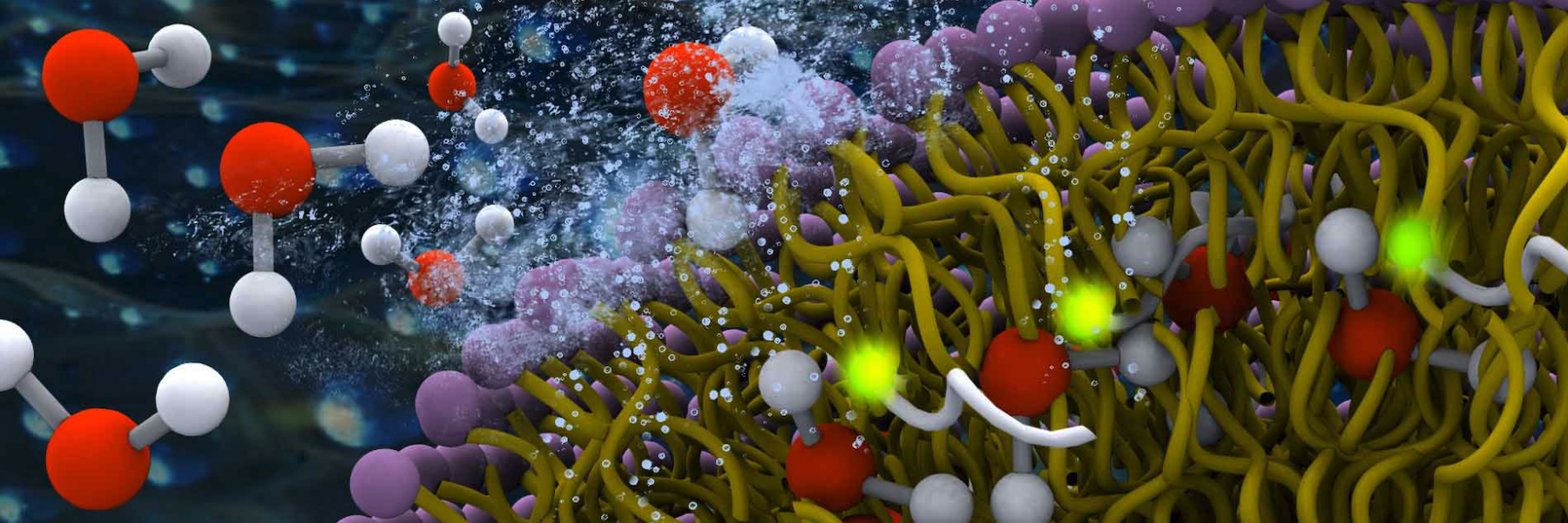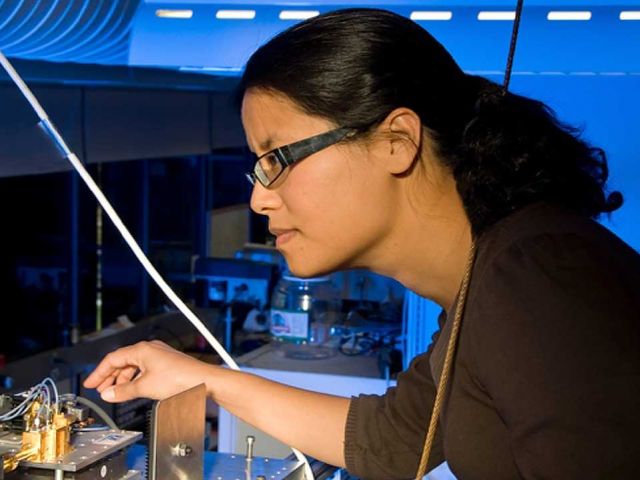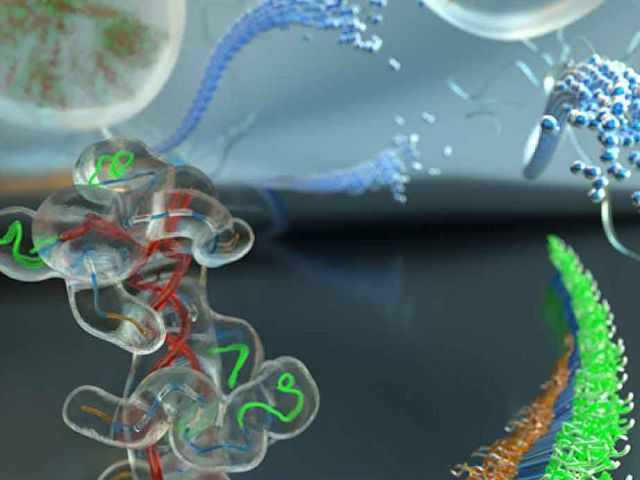The Han Lab pushes the frontiers of magnetic resonance spectroscopy and relaxometry for the study of biomolecular interactions, biomolecular and materials surfaces, and the property of their hydration layers. The particular emphasis is on the interrogation of interfaces and local structures through locally amplified NMR spectroscopy of materials and biological systems around electron spin “sensors” and "antennas". The study of local features at the nanometer and sub-nanometer scale is achieved through the use of strategically placed or intrinsically located electron spin probes and sites, and orders of magnitudes in NMR signal enhancements, achieved through the polarization transfer from the electron spin probes to the surrounding nuclear spins, relying on processed broadly termed dynamic nuclear polarization (DNP).
State-of-the-art Research Tools
The Han lab develops highly sensitive and novel instrumentation, as well as relies an existing plethora of state-of-the-art magnetic resonance tools for the advanced "visualization" of biomolecular interactions, biomolecular and materials surfaces, and their surface hydration water properties. The tools of the Han lab include solid-state NMR and DNP-enhanced NMR spectroscopy of biosolids and materials, Overhauser DNP of the hydration layer, continuous wave (cw) and pulsed dipolar EPR spectroscopy for structural biology, and hyperfine EPR and DNP spectroscopy of transition metal sites. Some experiments are performed with unique, home-built, instrumentation, and others rely on commercial instrumentation and shared facilities.
Interdisciplinary Research Topics
An ambitious and general goal of the laboratory is to turn NMR from a bulk to a sub-nanometer surface characterization tool, and in doing so access novel information content and research utility in materials science, molecular biochemistry and physical chemistry. Find out more about our current work in the following research sections, or click on the publications tab to see what has been done so far.
